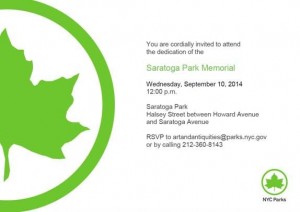THE VIRUS TAKES A WOMAN MARINE (1918)
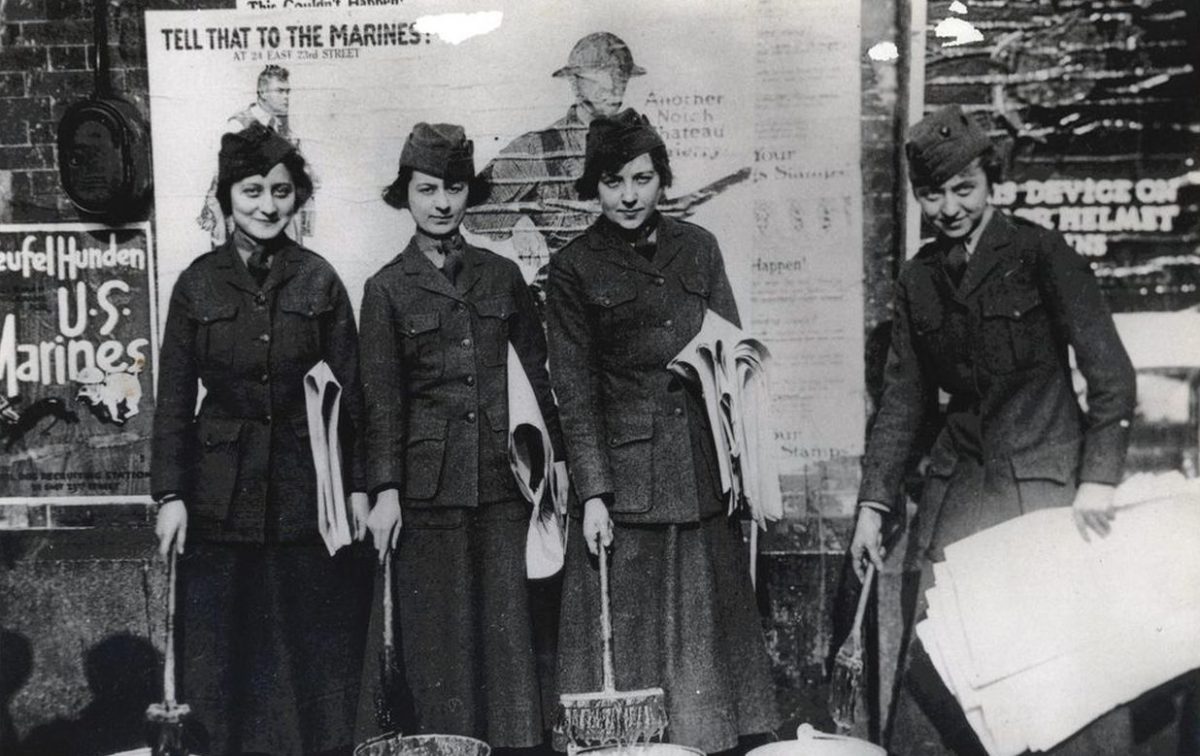
Brownstone Detectives investigates the history of our clients’ homes.
The story you are about to read was composed from research conducted in the course of one of those investigations.
Do you know the history of YOUR house?
********************************************************************************************************************************

In 2014, The Brownstone Detectives partnered with the New York City Parks Department to help celebrate the lives of the servicemembers of Bedford-Stuyvesant Heights who made the ultimate sacrifice during the Great War.
We researched these heroes to locate pictures, stories, and their descendants to be brought together for a ceremony that dedicated a new “Victory and Peace” war memorial at Saratoga Park.
This biography tells the story of one of those servicemembers.
PROLOGUE
In 1918, when the United States was fighting a war overseas, the country was also fighting a conflict back home – influenza. Just as people were dying in the the “Great War” to combat “the Hun,” Americans were succumbing back home to a virus that was leading to their deaths in hospitals. Much like with today’s coronavirus, there were still essential services then that needed to be continued. One of those services was recruiting for that overseas war. One of those recruiters was one of the first woman Marines. She lived on Macon Street in the Bedford-Stuyvesant section of Brooklyn. She came down with influenza while on recruiting duty in Manhattan. And she became the first woman Marine buried with full military honors. This is her story.
PVT. LILLIAN MAY BOGEN PATTERSON
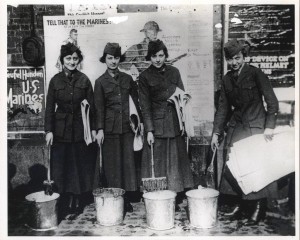
It would be a mistake to believe that every name on the honor rolls of the Saratoga Park WWI Memorial was that of a man.
When the “Great War” had come to an end and American communities were honoring their dead throughout the country, a small section of Brooklyn counted among their war dead a woman Marine, a recruiter who joined up to make a difference during a very difficult time in America.
It was a time that brought an influenza epidemic to the homefront while untold hundreds of thousands of men were fighting a war overseas. This woman would find herself, though, just as “at risk” by fulfilling her duties as a recruiter for that war back home.
She was a Marine and for that period in time in history, she was an anomaly – a woman in a military uniform, fighting a war on the homefront. And she was also to become an example for those on the homefront, showing her fellow Americans, New Yorkers, and Brooklynites just how much they were “all in it together” – fighting a war overseas, while combating an epidemic back home.
“MRS. PATTERSON”
Her name was Lillian May Bogen Patterson and she had lived at 748 Macon Street. It was claimed, with some authority, that she was the first female Marine to be buried with military honors.
It would have been understandable, though, if you were to miss her name. It was listed on the monument simply as “L.M. Patterson.” Why that was, it may never be known – but it may have been due to the fact that Patterson, who was not in a fighting unit due to her sex, had not met her end on the front lines – she worked in Manhattan recruiting Marines.

In other lists, primarily in newspapers, she was also listed as “Mrs. L. M. Patterson” – while the men in those lists did not receive the same “Mr.” treatment. It was a different time back then. Women were treated differently.
Patterson died, though, as many of the men “over there” had – a victim of the disease that killed more people than the Great War itself – influenza.
Patterson had enlisted in the Marine Corps on 10 October 1918. There was certainly no draft for women at the time; those of the “gentler sex” were expected to be at home, supporting the men fighting valiantly on the front lines, and protecting the home front.
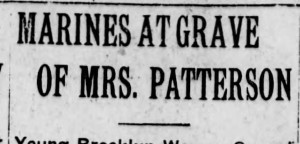
But Patterson joined up, anyhow. And in so doing, she became a part of the toughest fighting force in the world – the U.S. Marines.
It isn’t clear why she signed up. Perhaps she wanted to do something more than most women were doing for the war effort. Or perhaps she wanted to support her husband, Alfred, who was fighting in France with the 70th Coast Artillery.
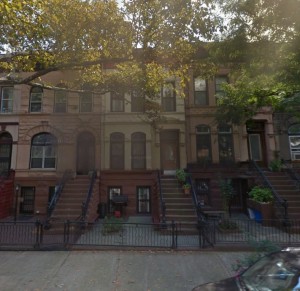
The Marines had just started a campaign to attract women to fill office and clerical roles in the States while all battle-ready male Marines were being shipped to the frontlines.
And so, to help fill those vacancies, the Marine Corps hypothesized, they would open enlistment to women for the first time – a full two years before women could even vote!

Either way, Patterson became a pioneer. And she made her sacrifice to her country in life as well as in death.
At her funeral, “Little Pat,” as they called her, had in attendance the “entire recruiting force of the Marine Corps for the New York District,” as Marines fired “three volleys,” and the bugler sounded “taps.”
Patterson was survived by her husband, Albert Edmund, her parents Joseph and Hannah Bogen, and by a brother, Chester.
(To learn about the history of the “Victory & Peace” memorial, click HERE.)
———————————————————————————————————————–
 Brownstone Detectives is an historic property research agency. Our mission is to document and save the histories of our clients’ homes. From our research, we produce our celebrated House History Books and House History Reports. Contact us today to begin discovering the history of your home.
Brownstone Detectives is an historic property research agency. Our mission is to document and save the histories of our clients’ homes. From our research, we produce our celebrated House History Books and House History Reports. Contact us today to begin discovering the history of your home.
